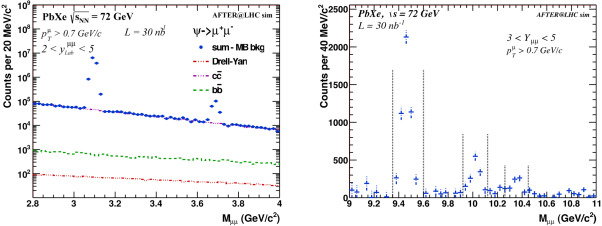
# Researchers Chart Mass Distribution in Subatomic Particles, Revealing Fresh Perspectives for Upcoming Experiments
In a pioneering investigation, researchers have effectively charted the distribution of mass within two essential subatomic particles of the universe: the pion and the nucleon. Utilizing sophisticated numerical methods, this study illuminates a long-standing inquiry in particle physics: the arrangement of mass within particles such as protons and neutrons and its derivation from their fundamental components—quarks and gluons. These results could profoundly impact forthcoming experiments, especially those intended for the Electron-Ion Collider (EIC) at Brookhaven National Laboratory, a facility anticipated to address fundamental queries regarding the essence of matter.
Published in *Physical Review D* in May 2024, the study pioneers new territory in both theoretical and experimental physics.
—
## Examining the Inner Architecture of Subatomic Particles: An Inside Look
At the heart of this research lies a fascinating characteristic known as the **trace anomaly**. This anomaly is directly connected to the forces that bind quarks, the fundamental units of hadrons, within subatomic particles. The trace anomaly is vital in producing mass and energy in these particles, extending beyond what Higgs boson interactions can solely explain.
For the inaugural time, scientists have applied first-principle calculations—those derived directly from core physical laws—to create precise maps that demonstrate how mass is distributed in pions and nucleons. Their results indicate that mass distribution in these particles reflects their charge distribution. Specifically:
– In **pions**, the mass distribution closely mimics the charge distribution observed in **neutrons**.
– In **nucleons** such as protons and neutrons, the mass distribution parallels the charge distribution identified in **protons**.
This symmetry between charge and mass distribution is crucial, as it reinforces the connection between the source of mass and electromagnetic interactions within the particle. Researchers assert that this mapping approach is akin to how **X-ray diffraction** in molecular biology unveiled the famous double-helix structure of DNA. Just as X-ray diffraction enabled scientists to visualize DNA’s complex arrangement, scattering electrons off protons in particle experiments reveals the internal structure of subatomic particles. These methods illustrate the distribution of gluons, the particles that bind quarks together via the strong force, within protons and pions.
—
## Laying the Groundwork for Upcoming Experiments: Applications at the Electron-Ion Collider
The planned **Electron-Ion Collider (EIC)** at Brookhaven National Laboratory will serve as an optimal testing environment for these new theoretical insights. By colliding high-energy electrons with protons, researchers will be able to scrutinize the inner workings of protons and more precisely ascertain how mass and energy are allocated among the quarks and gluons within them.
The study’s findings are anticipated to enhance the interpretation of the data obtained from these electron-proton collisions, particularly concerning the **mass and charge distributions** highlighted during the collisions. More intriguingly, the current research also emphasizes the unique role that **pions** play in particle interactions. The study forges a significant link between:
– **Absolute scales**: Constants in nature known as invariant quantities (e.g., particle mass).
– **Asymmetry** between **left-handed** and **right-handed** quantities: Essential to the Standard Model’s portrayal of particle physics, where certain phenomena display “handedness,” or chirality.
By uncovering how mass is allocated in pions, the researchers offer deeper insights into how these fundamental components mediate force interactions among particles.
—
## Unresolved Questions and Future Directions
The team notes that, despite this significant advancement, numerous challenges persist in fully grasping mass distribution at the quantum level. Some issues still to be explored include:
– The significance of **unphysical sea quark mass**, hypothetical quarks introduced in calculations to streamline problem-solving.
– **Discretization** inaccuracies in numerical computations. These arise from segmenting continuous physical fields into finite grids for computational purposes, potentially leading to minor errors.
– **Finite-volume effects**: Minor distortions that occur when calculations are executed on a finite, rather than infinite, grid.
These difficulties highlight the intricacy of particle physics and emphasize the necessity for higher precision experiments to validate and refine existing theories.
—
## Glossary
To assist readers in delving into the captivating realm of subatomic particles, here’s a brief overview of some key concepts mentioned in the article:
– **Hadron**: A composite subatomic particle formed from quarks, bound together by the strong force (e.g., protons and neutrons).
– **Quark**: A fundamental particle that combines with others to create hadrons. Quarks exist in various types, known as “flavors” (up, down, strange, etc.).
– **Gluon**: The particle responsible for transmitting the strong force that holds quarks inside protons, neutrons, and other hadrons.
– **Trace Anomaly**